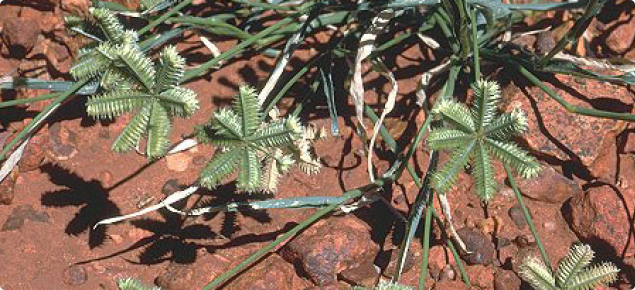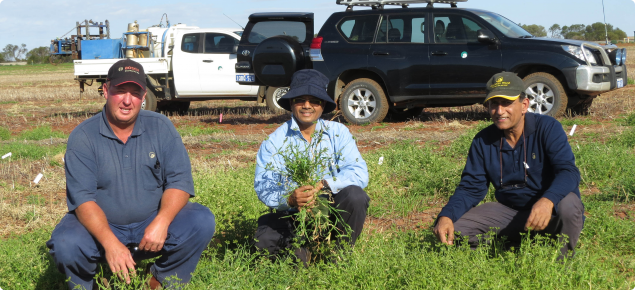Key messages
- Emerging summer and winter weeds (herbicide-resistant biotype or new incursions) such as African love grass, brome grass, fleabane, windmill grass, wild radish, sowthistle, button grass and tar vine are increasing within paddock and along roadsides of WA.
- Continuous application of glyphosate developed glyphosate-resistant ryegrass biotypes and resulted in incursions of new weed species at Merredin.
- Double knockdowns of glyphosate alone or as tank mix with 2,4-D followed by paraquat-based mixture effectively controlled button grass, fleabane, sowthistle and tar vine but higher label rates of glyphosate were required to kill summer weeds during hot summer days than mild autumn days.
- IWM, employing single or double knocks, non-chemical weed control options and application of effective in-crop herbicide mixtures significantly reduced wild radish in three years. Harvesting crop low, windrowing and burning narrow windrows reduced brome grass by 70%.
Method
Seven laboratory experiments, three glasshouse experiments, two small-plot field experiments and 18 field trials (across seasons and locations) were conducted from 2014-2016 in WA on the emergence pattern, seed dormancy breaking, weed biology, herbicide resistance and control of emerging weeds. A roadside survey was conducted during the summer/autumn of 2015 and 2016 to determine the spread of emerging weeds within WA grainbelt.
Results
Roadside weed survey across the WA grainbelt during summer of 2015 and 2016 showed that the most common summer weed species were African love grass (87%), fleabane (60%), windmill grass (61%) and wild radish (52%). Sowthistle (26%), button grass (10%) and tar vine (7%) were new incursions. Sowthistle populations were developing resistance to glyphosate and ALS-inhibitors. Long-term continuous application of glyphosate developed glyphosate-resistant biotypes of annual ryegrass and red brome at Merredin in 2011 and 2012 and also led to incursions of many new weed species in 2016. Fleabane, sowthistle, button grass and tar vine can germinate in summer and as well as in other seasons. Persistence of sowthistle and fleabane was longer when buried shallowly than left on the surface. Highly dormant button grass seed germinated well after scarification and short-term hydration. Double knockdowns of glyphosate alone or as tank mix with 2,4-D followed by paraquat-based mixture effectively controlled button grass, fleabane sowthistle and tar vine but higher label rates of glyphosate were required to kill summer weeds during hot summer days than mild autumn days. IWM including effective knockdowns (single or double knock), non-chemical weed control options and application of effective in-crop herbicide mixtures significantly reduced the wild radish population in three years. Harvesting a wheat crop at 10cm high collected 74% of the total viable seed of brome grass into narrow windrows and windrow burning killed 94%, leading to a reduction of brome grass by 70%.
Conclusions
Farmers need to adopt IWM including effective chemical and non-chemical weed control options to manage emerging summer and winter weeds within WA grainbelt.


